Sea washed lighthouses, also known as wave washed lights are not as accessible as some other lighthouses. You can't just drive or walk up to them. That's because they weren't built on the coast, as many others were.
They were built out in the water, often on a rock outcropping, or sometimes a small reef or islet that's only visible at low tide. Some of the rocks on which they are built are barely larger than the footprint of the lighthouse itself.
The building of one of these special beacons has never been undertaken lightly. The design and engineering presents special problems, and the construction is no easy task either. Men have died trying!
Once these structures had been erected, the hardships weren't entirely over. The lighthouse keepers who manned them had to possess a special inner metal, one that could draw upon a single minded faithfulness to a task in the midst of an almost cruelly enforced isolation and solitude. The lives of others depended on that absolute faithfulness.
Yet, more wave washed lights were built through the ages than you might suspect. And a few of them still survive. Three of them are featured on this page.








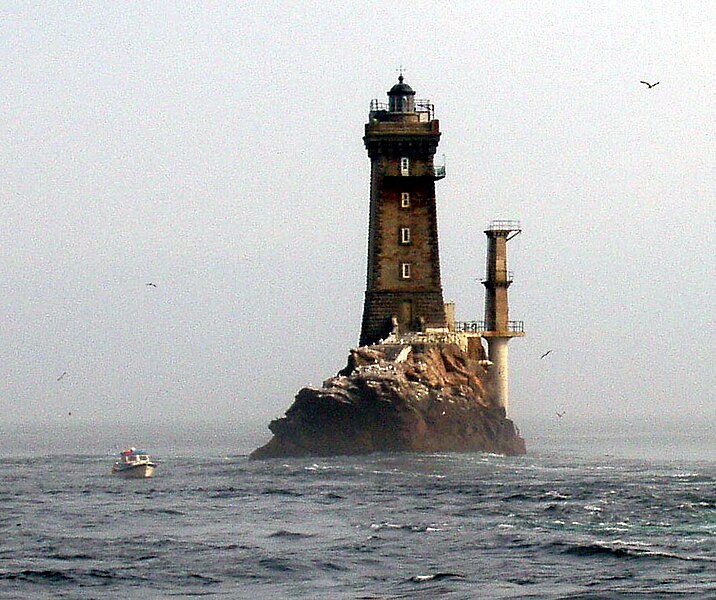


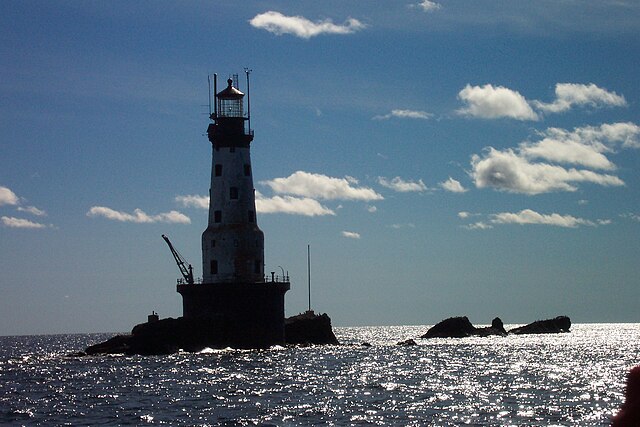








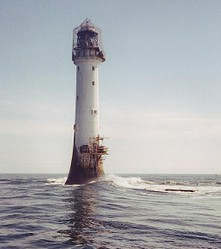

 Gold Heart Locketson 12/30/2015
Gold Heart Locketson 12/30/2015
 Ships and Boats on Electrical Wall Plateson 11/12/2015
Ships and Boats on Electrical Wall Plateson 11/12/2015
 Nautical Jigsaw Puzzles: Ships and the Seaon 11/04/2015
Nautical Jigsaw Puzzles: Ships and the Seaon 11/04/2015
 Tropical Flower Christmas Ornamentson 11/03/2015
Tropical Flower Christmas Ornamentson 11/03/2015
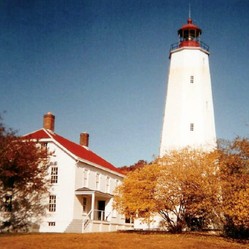
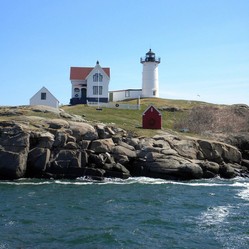
Would You Like to Have Been a Keeper at a Wave Washed Light?
Southey's poem on the Inchcape finishes with the pirate's ship sinking and his hearing the jubilant devils ringing a bell to celebrate his arrival in Hell, while all all his plunder goes down to the seabed.
Robert Stevenson, who erected the Inchcape light, was from a famous family of engineers who constructed many lighthouses around the coasts of Britain and Ireland. From them came the writer Robert Louis Stevenson.
The word inch is from the Celtic word inis, which denotes an Island. I do not know what the word cape means in this context.
CruiseReady, Many thanks to you for the article and to FrankBeswick for the information on how the Bell Rock bell was secured!
Southey's poem states "On a buoy in the storm it floated and swung,
Over the waves its warning rung.
Then mariners knew of the perilous rock
And they blessed the abbot of Aberbrothock
Later Sir Ralph leaned over from the boat
And he cut the bell from the Inchcape float
Quoth Sir Ralph "The next who comes to the rock
Won't bless the abbot of Aberbrothock
Later, of Sir Ralph's doomed vessel
They hear no sound, the swell is strong
Though the wind has fallen they drift along
Then the vessel strikes with a shuddering shock
Oh horror! It is the Inchcape Rock
Southey was into divine vengeance against injustice, as we see also in the poem about an evil bishop who is eaten alive by rats, Bishop Hatto. But this is a legend that does no justice to the bishop. There were several such legends in the Middle Ages.
CruiseReady, Is there any information as to how the Bell Rock bell was secured? It must have been really strong rope to withstand waves and winds.
Thanks! That bit of information about the abbey is good to know. (And isn't that the beauty of a site like Wizzley - the continuous sharing of information?)
Yes, it is the legend of which I was speaking. In the poem the abbey of Aberbrothock was the abbey of Arbroath.
Yes! There's a link I've provided near the end of the section called "How Inchcape Came to be Known as Bell Rock." Is that the same one you are referring to?
There is a poem by Southey about the legend of the Inchcape Rock and the vengeance wrought on the pirate who destroyed the warning bell placed there by the monks.
You are very welcome - thank you for taking the time to read it.